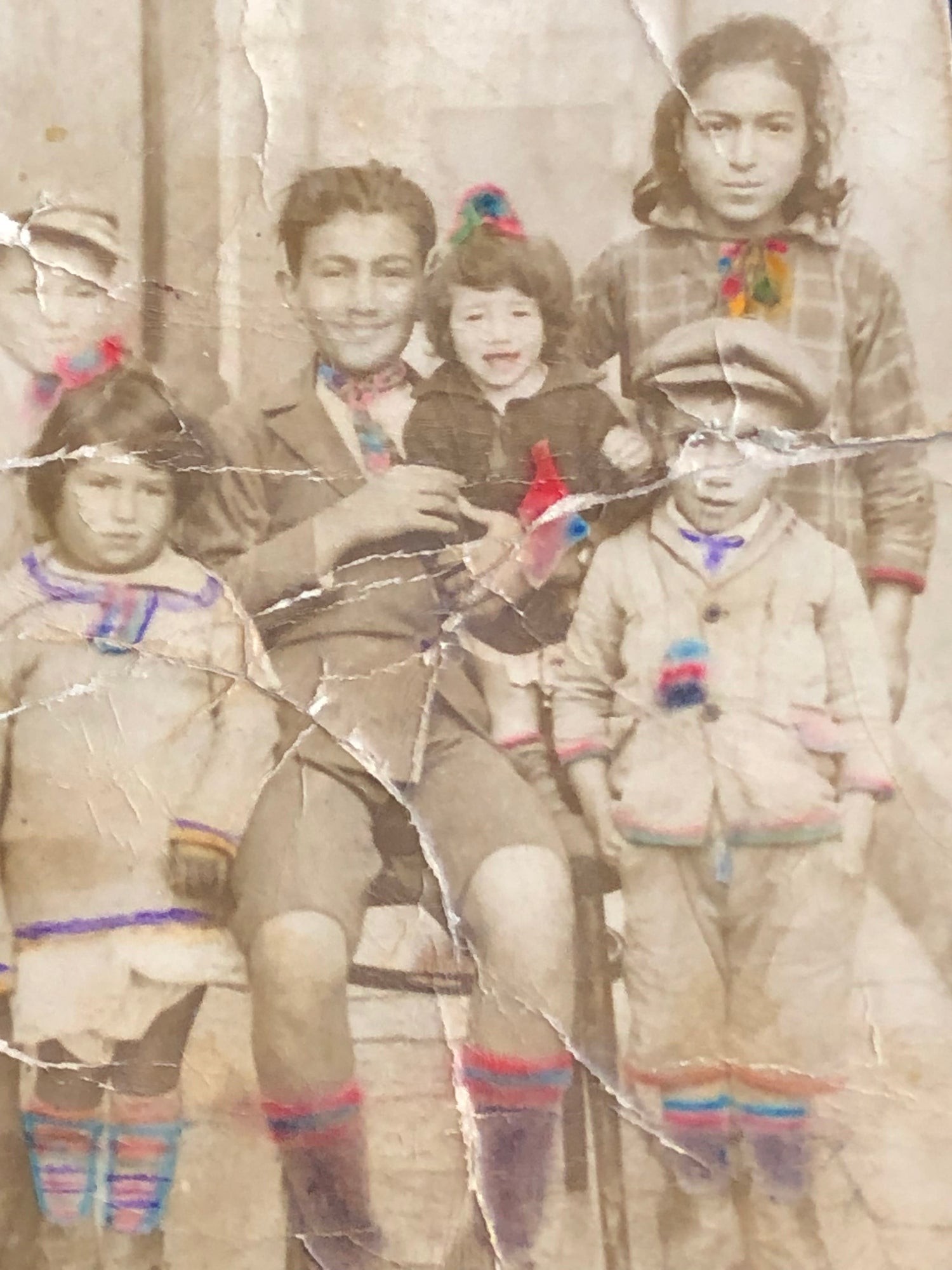
1881
David Zakariya, Yosef's grandfather, with his family in Italy.
David specialized in manual engraving and taught the craft Yosef's father, Baruch
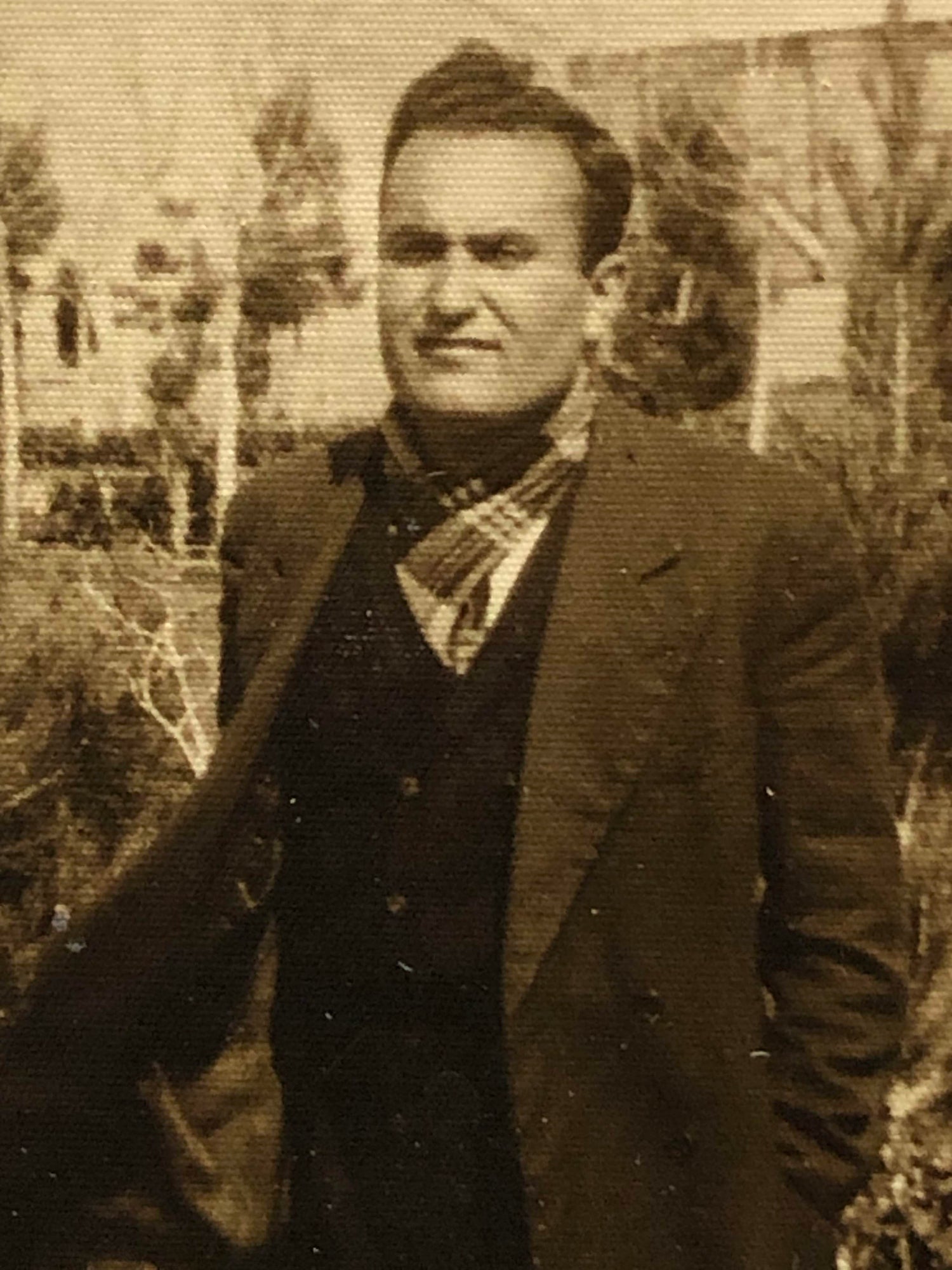
1945
“My father did great works for the royal house (through the merchants and brokers) and other very impressive works for high end clients.
Every day, early In the morning, we ate breakfast together, then we took the walk from the house to my fathers workshop (4 minutes).
I can remember us coming back home for lunch with the whole family for dinner, then we took a short siesta and then we got back to work at the workshop till late evening.
He was a diplomacy and international relations fan, he had the vision of a military commander. We also liked to watch football, traveling together and to watch movies.
I miss him"
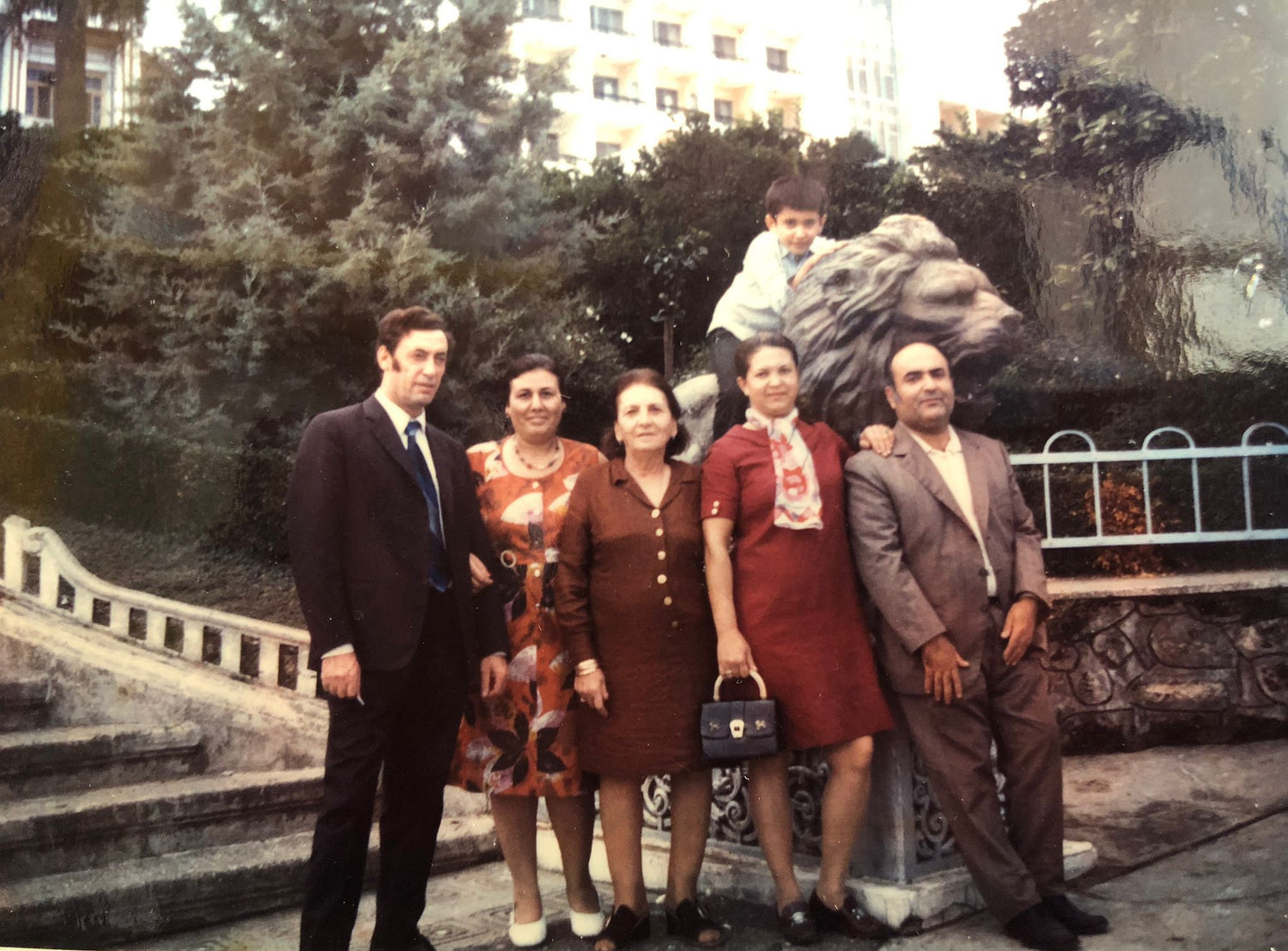
1968
"I was born in Tehran in the summer of 1964, an elderly son of parents who themselves were not pure Persians, each one came from a distant place and a different country to Tehran.
I grew up in a house of morals and values. A lot of respect for the person and his dignity, a lot of humor and all this with a non-stop spirit of creativity and art making. My dad teached me creativity and my mother was in charge of teaching me spiritual and philosophical thinking. That combination was the one who had shaped my soul to be the way it is and gave me the reason for making this fascinating trip again to our wonderful world.
Even as a young child, I listened to many conversations about the writings of Kabbalah.
Around my fathers workshop, there were always so many different works and creation, gold, precious gems and so on. in my memory the I can see a model of the royal carriage of the Persian Shah that was still in the process of creation at the time.
My father and his workers made two copies of the carriage out of pure gold and inlaid the most beautiful stones on it. Back then, they would inlay the carriage which I think was no more than 25 cm in size but in the eyes of a child, each horse leg was the size of a chick, all the spinel, rubies, sapphires and emeralds looked just like rocks.
Aesthetics Aesthetics Aesthetics-this was the language I acquired there, even though the workshop was quite black and sooty, I remember the fire with jet gasoline and a blower or nozzles for soldering, they built some of the work tools by themselves which made the workshop resemble a type of locksmith and blacksmith shop
There were no electric drills, Everything was mechanical.
These tools are with me all the time and they are the testimony and the memory of the house (workshop)of my father.”
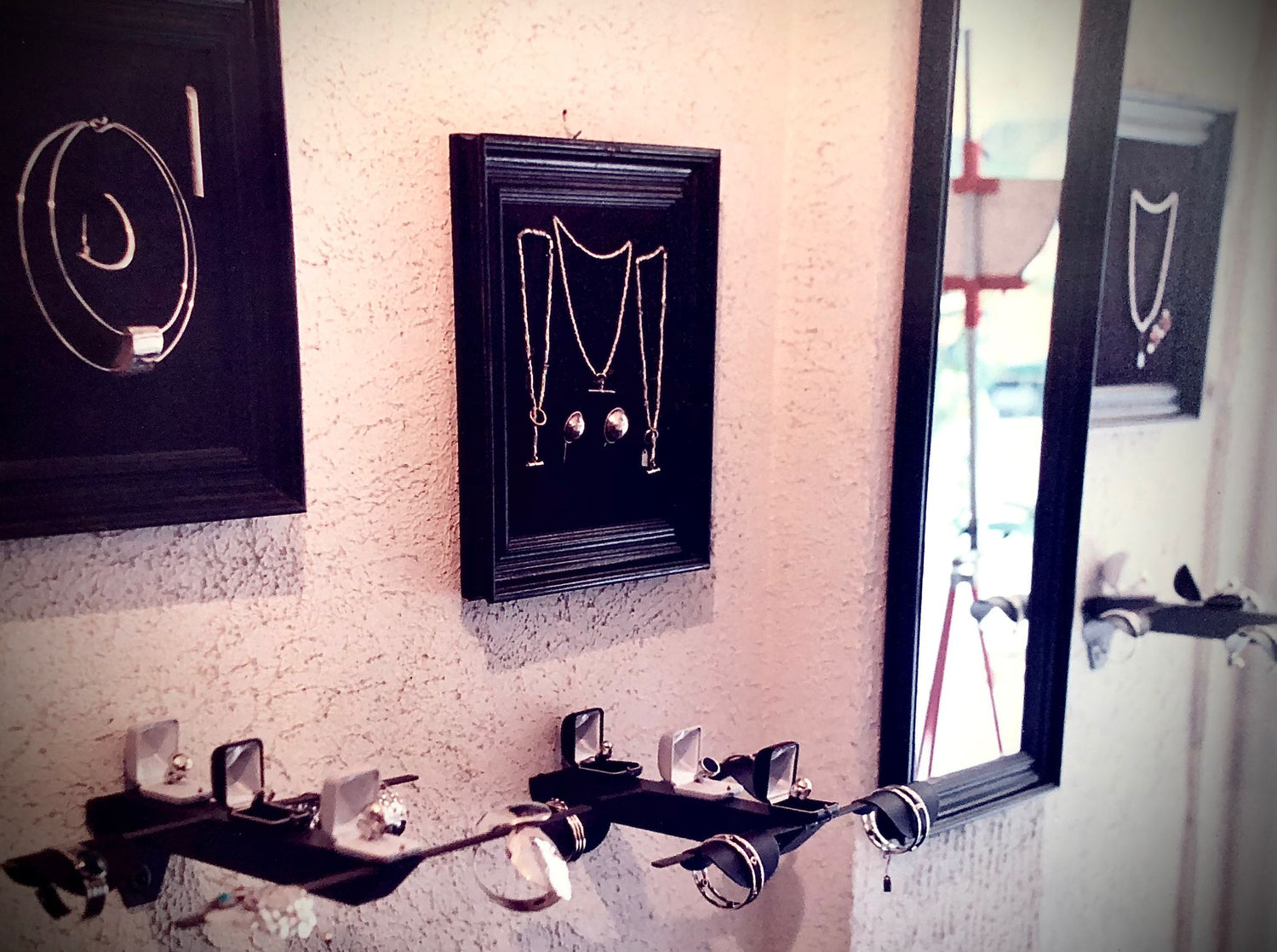
1985
" I opened My first studio in 1985, it was at Ben Yehuda Street, 147.
After being discharged from the army, I joined working with my father and my brother.
My brother retired in favor of other occupations, even though he was insanely talented, agile and had extraordinary improvisational abilities, from him I learned a lot more from my childhood, how he perfected simple toys into special things, etc.
My father was already quite ill and came less to the shop, so that I found myself carrying the name Zakariya on my shoulders and with it the obligation to prove excellence, professionalism, integrity and loyalty to the profession of goldsmiths and jewelry arts.
I was then after a difficult combat service in the First Lebanon War.
Lots of ambition and endless motivation from then until today.
I am in love with the creative processes from the moment of the idea to the execution on any scale from 4 mm to 4000 square meters.”
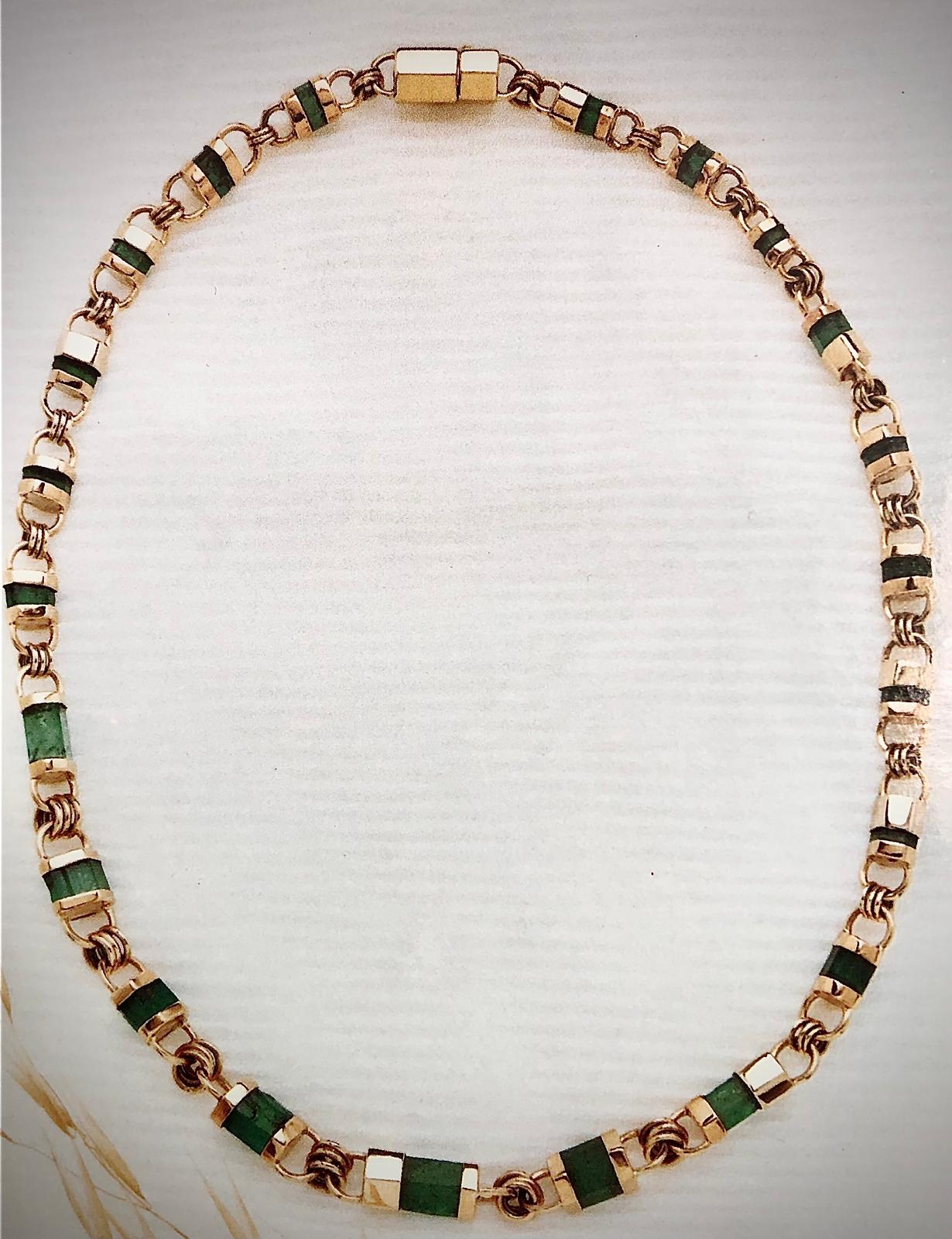
1994
International Designers Hall Basel Switzerland.
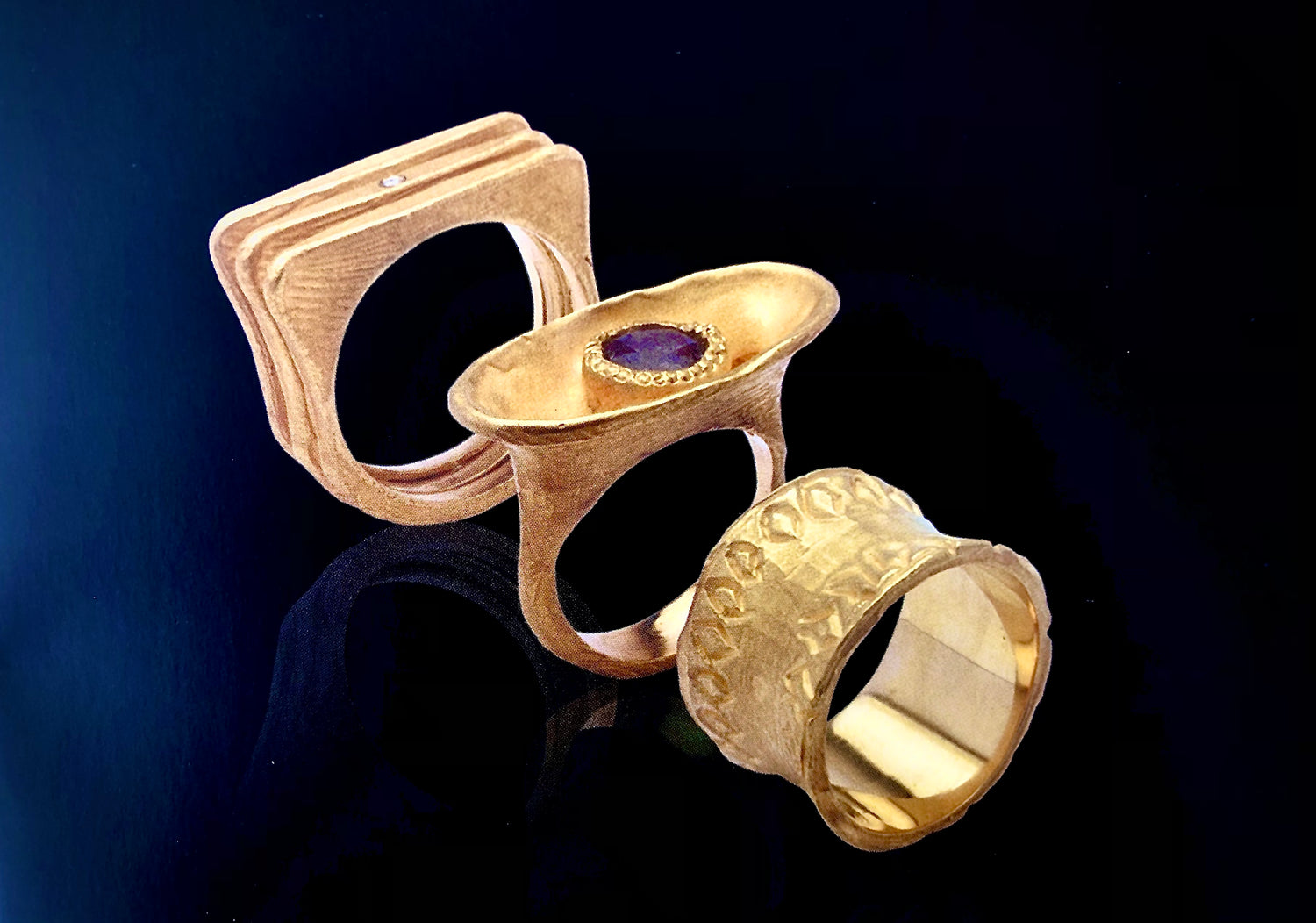
1999-2001
Goshen
This work for me is a essence and a connection to our ancient roots
A tribute to the artists and craftsmen who created in the ancient times.
I see this work as a kind of time travel back to ancient work methods, without today's technologies.
It is fascinating to research how pure gold, silver and copper were cast. These work processes require, for example, very high temperatures, basic tools, some type iron for pounding hummer, some stone tools, some wooden tools. Goshen required knowledge of castings into sand or into skeletons of squids which are made of a material such as compressed plaster. I then worked with what was at hand, a masterful pigmentation was created from minerals, spices and minerals.
I followed these processes, to the forms of the landscape, the dunes, both at the bottom of the sea and outside to observe and learn from pure nature, to learn what being humble really means
I sat on different types of soil for working the gold, I poured into the skeletons of squids, some of the processes I knew from my father's, grandfather's and great grandfather's house, everything seems so primitive but so ingenious and full of light and abundance of creativity,
Goshen for me is a unit of the formation of the past, present and future together,
24 - 22 k
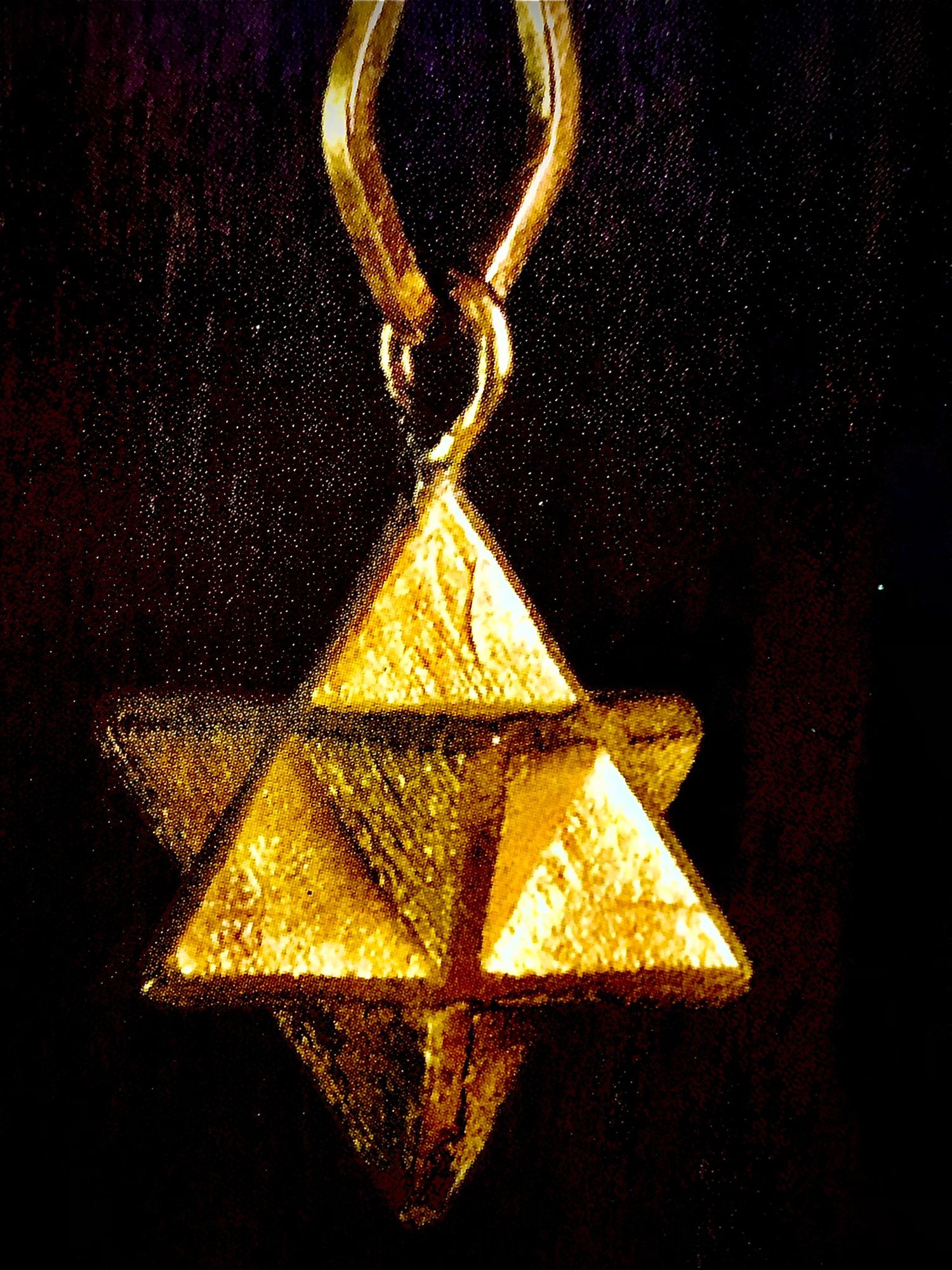
2003
"I “met” the Merkavah formation for the first time in the text, Sefer Yezirah, from the 5th Mishnah division.
"Roman eastern border, northern eastern border, lower eastern border", and so on, A description of the physical space and our consciousness, "diagonal limits", many, many secrets within these words. I learned with my teacher Rabbi Eliyahu Ezard, around the years 1999-2000.
The discovery itself was to translate texts into the visual language and through spatial vision the shape of the Merkavah was discovered. With 36 ribs, twenty-four surfaces, seventy-two wigs and more and more……..
Wow, even today I discover more and more information.
From there the gates of heaven opened and the journey began.
I observed and studied for two years until I felt ready to approach the work, the work process was extremely challenging both from a technical, professional,mental and spiritual point of view, to encode the knowledge into this wonderful creation, the Merkavah."
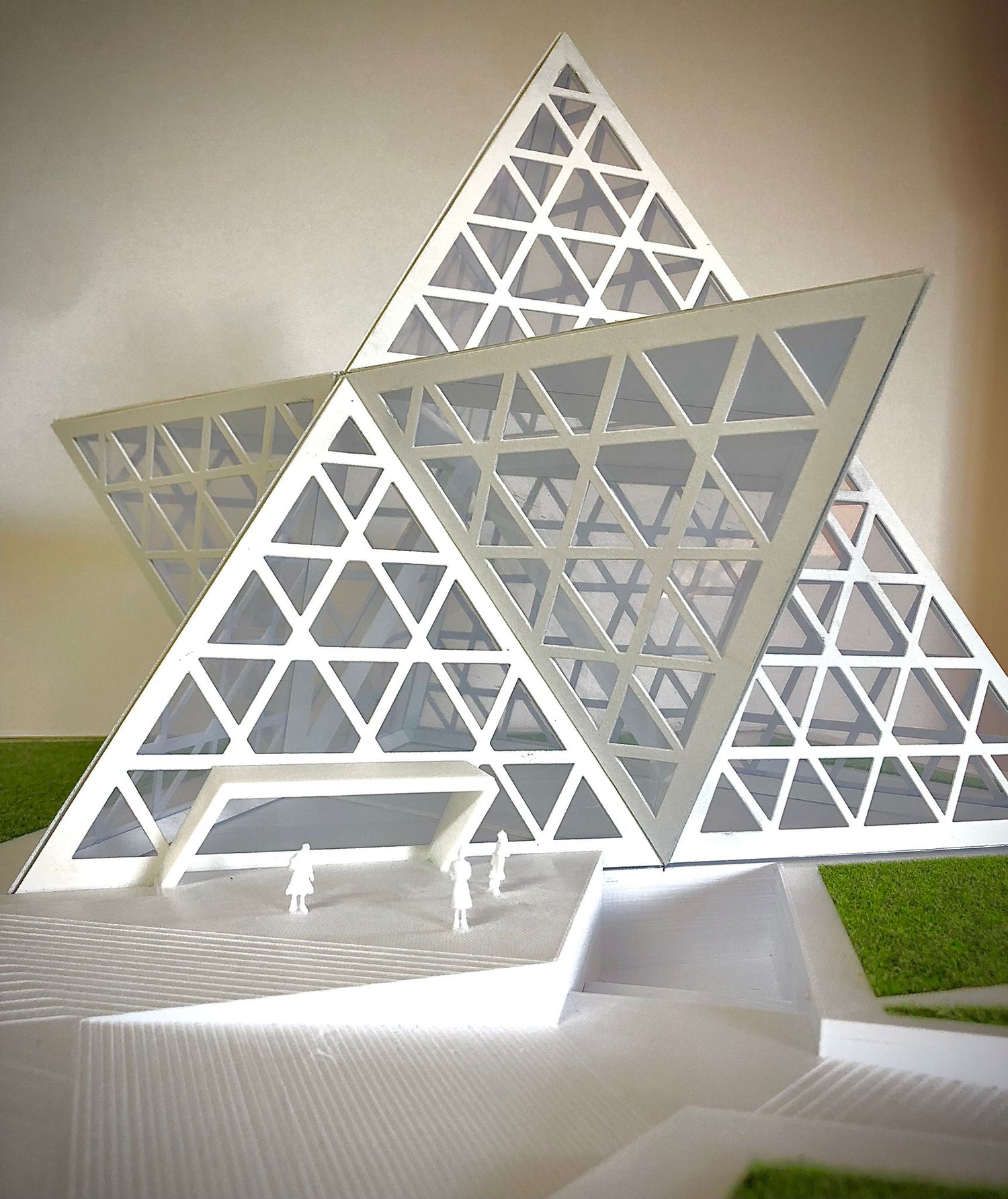
2010
What an extraordinary vision and mission! Bringing such a spiritual and meticulously constructed design from vision to physical form is truly profound. It is inspiring to see this Merkava center moving forward, especially with a careful selection of partners who align with the spiritual and practical needs of the project. This piece sounds like it will offer a unique experience of connection and harmony to anyone who enters.
Very soon I will post about the location, staff and purpose of the Merkava Hall
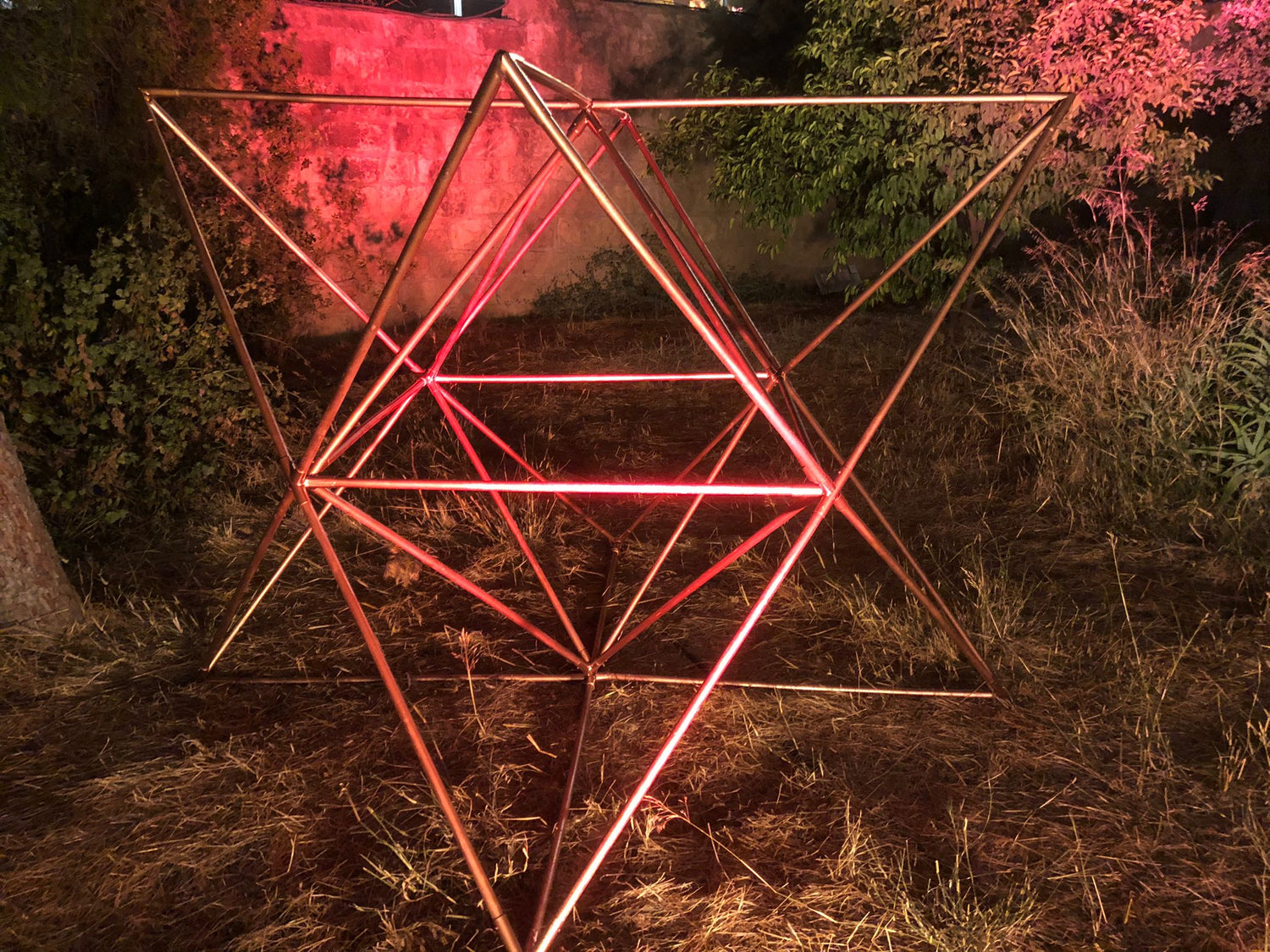
2024
The Merkava structure was crafted with meticulous attention to spiritual and symbolic values to create a space where an individual can enter for seclusion and introspection. This design aims to enable a full reset of a person’s spiritual system—soul, spirit, and mind—guiding them on a precise journey of their life’s purpose.
